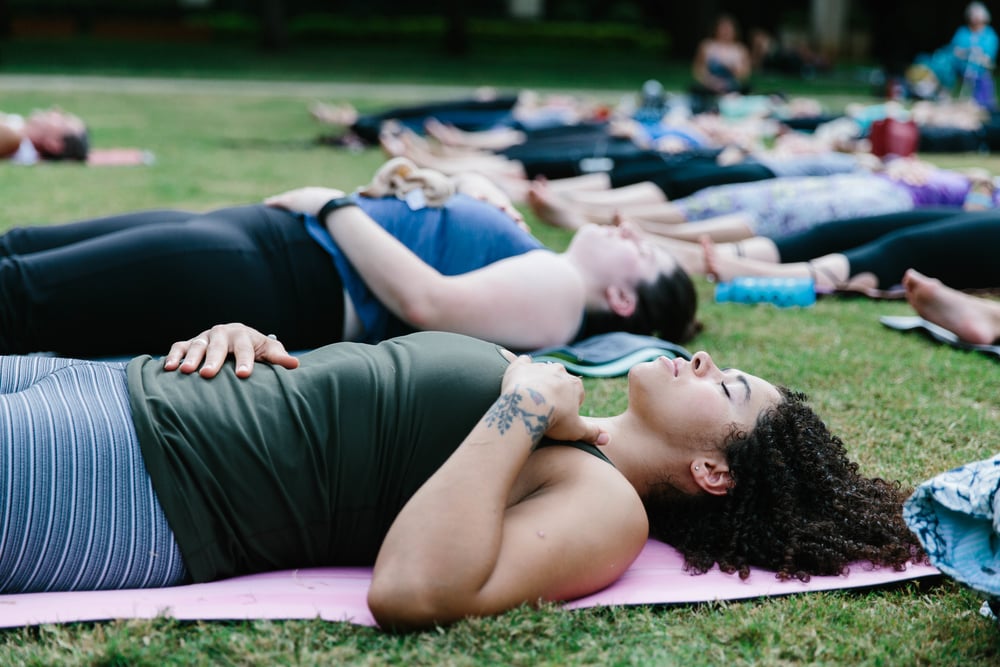I am leading a meditation practice this upcoming weekend. Me. Unbelievable.
It may seem completely normal for a yoga teacher to guide a meditation practice, but in reality I have spent years on the contemplative struggle-bus. I was that yoga teacher who secretly and shamefully omitted meditation from my practice. I feared the stillness and the physical discomfort that inevitably engulfed my practice, but I refused to seek help, because the thing I feared more than meditating was the judgment I believed would be heaped upon me for not meditating. This lasted a long time.
I used to believe I needed to emulate the meditation pros on mountains and in ashrams and in books in order to have a worthwhile contemplative practice – sitting upright, still, eyes closed, clearing my mind, forcing stillness upon my body and mind despite the awful physical experience I was having. My insides were aflame (I became unbelievably hot), my mind was like a movie on fast-forward, and I got so dizzy I would eventually have to put my head on the floor to stop the room from spinning. I used these physical issues as an excuse to skip meditation for a long time, convincing myself it simply wasn’t for me. Then I saw a counselor who, among other things, taught me how to move past these physical limitations to meditating, which made me ecstatic until I realized I no longer had an excuse to avoid the practice. I had to try again, with newfound dedication, or perhaps in a new way, or I had to admit that I simply didn’t want to make that change in my life in that moment.
With the beginning of a new year, as I witness the creation of resolutions with high hopes and strong intentions, I am reminded how the pressure we place on ourselves to create change and produce results can be immense. My inner battle to achieve a meditation practice taught me a lot about myself – notice how I used the word “achieve” there on purpose because that was my original approach to the practice. As I studied, let go of fear, and allowed myself to share my concerns and receive guidance from caring people who are experienced in the art of contemplation, I realized there are a lot of ways to approach meditation that might actually become enjoyable for me. Shifts in behavior, habits, bodies, and minds are made with effort and intention, but we must begin where we are in any given moment and allow the shift to be a process of managing challenges with inward kindness.
I was in a training this past week where my teacher pointed out that if a ship is turned one single degree, it will end up somewhere completely different by hundreds of miles depending on the distance traveled. The same is true in our lives in that we must address our challenges and goals by beginning in our current state and recognizing that big things will happen when we create small shifts. Part of this process must be tending to our inner landscape so that we can better assess our present capacity and needs, then get creative with how to cultivate growth in ways that will actually work for us, in all our individual glory.
I meditate now in small, manageable doses, and it works best for me when I follow some sort of guided imagery, usually of something tangible like the natural world. I actually love my little meditations now, and I have decided the most authentic thing I can offer in leading meditation practice this weekend is something I love – an accessible meditation, preceded by some movement and breath work to help us ease into stillness, and followed by a long savasana. I hope it will help us all to turn inward, invoke kindness toward ourselves, and sleep like logs.
